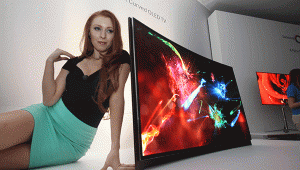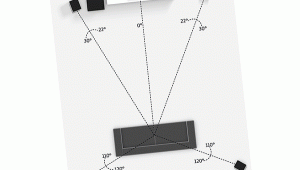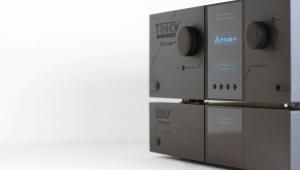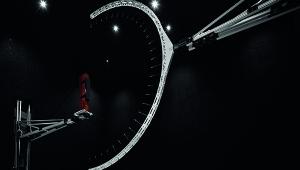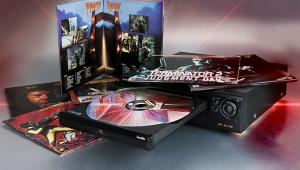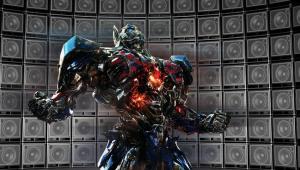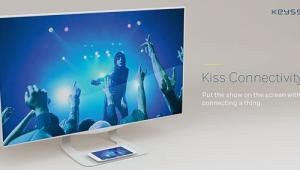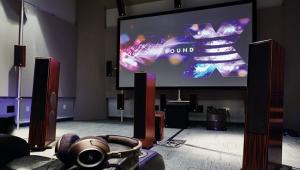The sound of real cinema?
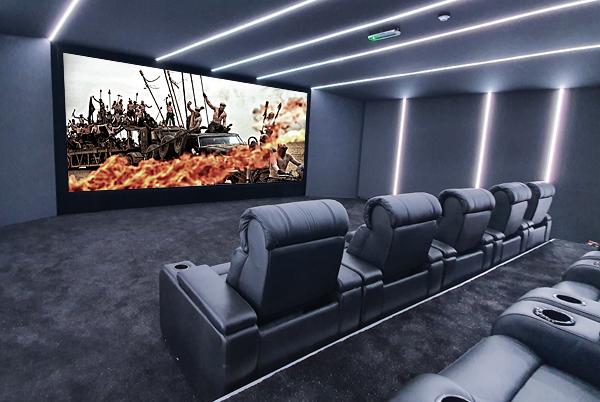
The American audio marque JBL has a storied history when it comes to cinema sound. Founder James Bullough Lansing, then with his Lansing Manufacturing Company, answered the call from studio MGM in the 1930s when it sought loudspeakers of better quality to do justice to its slate of new 'talkies'. Working with Douglas Shearer, head of MGM's sound department, he developed the two-way Shearer-Lansing speaker. This largescale wooden cabinet, also known as the Shearer Horn, handled a frequency range of 40Hz to 10kHz (a vast improvement on the 100Hz-5kHz Western Electric speakers used in many theatres) via a combination of compression driver and 15in bass units. The rest is Hollywood history.
The company, now based in Northridge, California, maintains a leading presence in commercial cinemas, with its latest figures claiming around 40 per cent of UK theatres feature its loudspeakers, rising to 70 per cent of those in the US. Yet alongside its professional business, the JBL name has become well known in domestic audio, from affordable headphones and soundbars, through to high-end loudspeakers and AV electronics under its Synthesis brand. The appeal of the latter is obvious if you think the idea of home cinema is to replicate the multiplex experience in your own room.
Turnkey Solution
For the last 11 years, JBL Synthesis has been distributed in the UK by Karma AV. The Yorkshire-based outfit handles the importation, installation and calibration of cinema setups that can easily reach in excess of £100,000. Not that you need to necessarily spend that much – the Synthesis range features nine loudspeakers and three subwoofers, with prices dipping down to £1,200 for the smallest SCL-8 in-ceiling model.

These can be all be purchased individually, and partnered with any AV receiver, or amp/processor combi, of your choosing. Yet JBL Synthesis wants to provide a 'complete turnkey' solution, meaning amplification, processing and calibration, of a speaker setup that meets your room's requirements (or your addiction to trouser-flapping bass). To this end, the company has recently overhauled not just its loudspeaker and subwoofer lines, but also its electronics, leveraging some technologies from stablemate brand Arcam, plus 'immersive audio' specialist Trinnov, to upgrade the Synthesis proposition to the state-of-the-art.
It was to check out this new platform that brought me to Karma AV's demo room. I'd been here in the past, around a decade ago when it had a 7.4 system installed. A large space, measuring roughly 10m by 8m, and with seating for ten, it's not the sort of room that can be quickly overhauled to house new hardware – initial planning began during the Covid lockdown of Spring 2020.
The cinema, which reopened for customers in February this year, now runs a 9.4.6 setup (with dual surround pairs) for enveloping Dolby Atmos and DTS:X. All the loudspeakers and electronics are from JBL Synthesis's current range (outgoing models, including a trio of gigantic 'Everest' cabinets, presumably fetching a decent price on eBay). None of the speakers are on show. But they do make their presence felt.
For the front soundstage, mounted behind an acoustically transparent 5.5m-wide screen (a JVC DLA-NX9 8K eShift projector handles visuals from an Oppo UDP-205 player) are three SCL-1s, the new flagship of the Synthesis range. Priced £18,000 a piece, these feature the company speciality – a horn-loaded compression driver that traces its lineage all the way back to James Bullough Lansing's earlier models – and pair of 12in 'Carbon Cellulose Composite Cone' woofers. Designed for dedicated rooms, the SCL-1 has its binding posts on the front, not the back, with terminals supporting bi-amping and a control to bypass its passive crossover network if used with an outboard device. Each speaker weighs 80kg, partly due to the 1in-thick enclosure design.
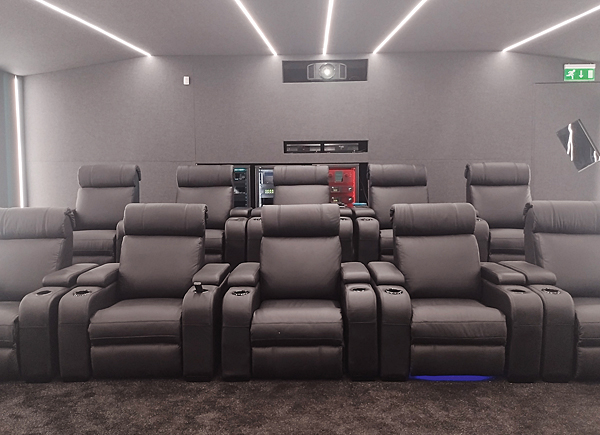
A smaller variant of this horn-loaded mid/high driver is found on the SCL-4 in-wall two-way speakers that are used for this cinema's surround pairs and rear speakers, and again on the six SCL-5 in-ceiling speakers. LFE is delivered by four SSW-1 subwoofers, in corner position, each sporting two 15in woofers. Previously, the subs were JBL S1 models, using single 18in cones.
Powering this array is a stack of amplifiers that possibly looks like overkill. There are nine in total: four slim-line DSi MA4-D amps powering the subs; two SDA-8300 eight-channel models splitting power across the surrounds, rears and heights; and three SDA-4600s. These are four-channel amps, but bridged to operate in dual-mono, then used to bi-amp one front speaker each.
What's unusual about the Synthesis system is the amplifiers – as well as the processor – have smarts. The specific characteristics of the partnering JBL (or Revel – another Harman brand) speaker can be uploaded to its DSP, so just as the SDP-75 processor 'knows' the loudspeaker at the end of each output channel, so do the amps. This makes the calibration process longer, and is one reason why Karma AV prefers to handle it itself.
If You Build It...
In addition to replacing the entire AV setup, Karma AV has redesigned the room. I wasn't necessarily paying a visit to stroke surfaces and gawp at light shows, but the aesthetics did impress. For a start, all the walls feature stretched fabric, using the tracking platform from Cinema Build Systems. This method allows a stud frame to be built, speakers and cabling to be put in place, and then a fabric – in this case, one from specialist brand Camina – stretched across and attached via CBS's 'walling track'. The result is that everything is hidden, but cable and loudspeaker maintenance remains easy as the fabric is simple to remove (unlike plasterboard). Furthermore, the ostensibly transparent sonic nature of the material means the visible wall surfaces don't create acoustic issues of their own.
 |
Home Cinema Choice #351 is on sale now, featuring: Samsung S95D flagship OLED TV; Ascendo loudspeakers; Pioneer VSA-LX805 AV receiver; UST projector roundup; 2024’s summer movies; Conan 4K; and more
|



